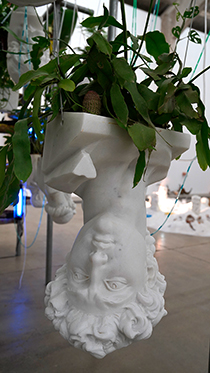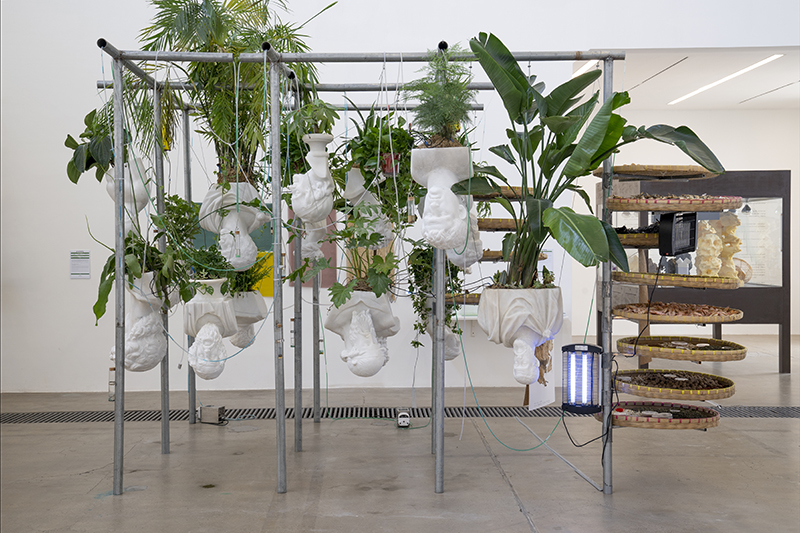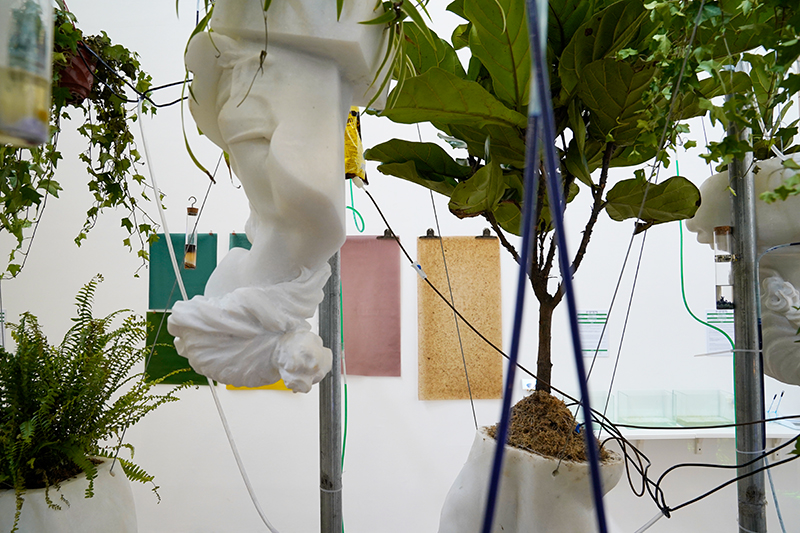 |
The Garden of Forking Paths |
||||||||||||||||||||||||||||||||||||||||||||||||||
|
Background: Most ornamental plants have undergone optimal cultivation and refinement to meet people's aesthetic and functional needs. Such endeavors involve traditional methods of artificial selection and breeding, as well as modern genetic engineering techniques. By modifying plant characteristics, such as altering flower or leaf colors, extending or adjusting the plant's flowering period, and improving its structure and form, ornamental plants can be considered as sculptures in their own right. In meticulously pruned gardens, plants are shaped into artistic forms, further enhancing their sculptural beauty. Human intervention in plant circulatory systems celebrates a long history. Traditional irrigation methods have been replaced by sophisticated drip irrigation systems, ensuring optimal water supply. Additionally, injectors and other specialized tools are utilized to administer medicinal or nutrient solutions directly into the stems of particular plants, providing targeted care and nourishment. Concept: Sculptures frequently adorn the landscape in traditional gardens, yet the plants themselves embody a sculptural quality. Plants comprise an intricate circulatory system, while steel pipe scaffolding represents an additional interconnected system. In this artwork, these two systems are deliberately intertwined. Here, the paths continually diverge, evoking a garden reminiscent of Borges' depiction of branching paths. Procedure: 1. Commission a group of skilled stone carvers from Quyang , Hebei , to re-sculpt renowned European classical sculpture plaster statues into marble. The statues should be hollowed out internally. 2. Suspend the inverted marble sculptures onto the scaffold structure, filling the interior with soil for planting various plants such as cacti, spider plants, and lucky bamboo, thus transforming the sculptures into planters. 3. Integrate the intravenous infusion system among the plants and position the circulating system within the scaffolding's steel pipes. Install peristaltic pumps for water circulation.
|



